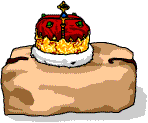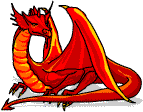Knightmare
Created | Updated Jan 28, 2002
"Welcome watchers of illusion, to the castle of confusion. Phase with us now, for this is the time of adventure. I, Treguard issue the challenge. Beyond that portal is the dungeon of deceit, which I alone have mastered..."
These were the first words of Treguard, master of the Knightmare dungeon in 1987. It was a call that challenged a whole generation of youth to hide behind the sofa and scream 'No, the path on the RIGHT, the RIGHT!'
Knightmare was a British adventure game show, originally aired on Children's ITV, aimed at a 9-15 year old audience. The show charged teams of teenage adventurers with the task of navigating the dangerous Knightmare dungeon in order to collect a vitally important quest item. In essence it was a fantasy role-playing game brought spectacularly to life, containing a host of fully interactive characters, fiendish hazards, devillish puzzles and dazzling computer-generated locations. Knightmare utilised the technology of the time to its fullest potential, mixing it with superb character acting and a level of suspense soap operas can only dream about to create the formula for an original, innovative and profoundly addictive show.
The adventure was set in the antechamber of Dunshelm Castle, owned by the infamous Treguard Dunshelm 1. From the relative safety of the chamber, three 'advisors' would guide a 'dungeoneer' through the unknown peril that was the Knightmare dungeon and, in later series, the outside world as well. Advisors were needed because the dungeoneer could not see through the large horned helmet they were required to wear 2. The advisors could see the dungeon in all its splendour through the Magic Mirror (a large screen in the wall).
In the lack-lustre world that some refer to as reality, the 'dungeon' was in fact the work of fantasy illustrator David Rowe applied to real scenery using Cromakey (aka 'blue-screen' or Colour Separation Overlay) technology used by television weather forecasters. The helmet blinded the dungeoneer to everything except what was directly beneath them, therefore everything had to be 'seen' for them. However, rather than rendering the dungeoneer useless, the helmet was revered and in some cases feared by the inhabitants of the Knightmare world, as a symbol of a quest in progress.
The aim of the quest, with the exception of the first series, was to navigate the three 'levels' of the dungeon in search of one of four symbolic items - the Cup, the Shield, the Sword or the Crown - which the team would choose before or early on in their quest. This, they knew, lay deep in the heart of Level 3, where only the most hardy quick witted teams survived. Levels 1 and 2 were precursor to this, providing tasks and traps of increasing difficulty. However, things were never that simple. Teams would meet and interact with a multitude of characters, each with their own personal aim -whether it be to help, hinder or simply harrang the dungeoneer. Sometimes the dungeoneer would have to prove (or lie about) their intentions to earn the trust of a character. Sometimes providing a character with what they wanted made them much more willing to help or give good advice. Aid was given in the form of spells, passwords, items (magical or otherwise) or a warning of things to come.
Further hindrence was provided to dungeoneers by the fact that they constantly had to nourish themselves along the way. The dungeon was no mere game, and the quest was wearying. Each dungeoneer started the quest with three levels of 'life force' (green: good, yellow: okay, red: dangerously low). Going for long periods without nourishment or being harmed in a non-fatal way would drop the life force by a level. Spending too long in the red level would end the quest, as would making a fatal mistake (e.g. stepping INTO rather than AROUND the chasm). Nourishment came in the form of food found along the way. This was taken to be 'eaten' once it had been put in the knapsack the dungeoneer was provided with. Food would restore life force to green level.
Like any respectable fantasy adventure, the Knightmare dungeon was a made up of dank caverns, forbidding gothic architecture and dark forests with the odd medieval town and wintery landscape thrown in for good measure. It was the high quality of most of these backdrops that helped give Knightmare the rich, almost believable and frankly quite spooky atmosphere that set it apart from other children's television shows of its time. However, this did not stop the creativity of Knightmare producer Tim Child to go one step further. In the fourth series, the Eye Shield was introduced as a permanent addition to the 'adventuring kit' of helmet and knapsack. This would allow the dungeoneer to see the for limited periods of time. In addition to this, the Knightmare production team added 'cut-scenes' from the real outdoors. Showing the outside world from the dungeoneers point of view, these were intended to add depth to and broaden the scope of the show.
Treguard Dunshelm: The one true Dungeon Master. As Knightmare lore went, he was the only man still alive to have mastered the dungeon. In later series, however, his power over the dungeon was limited, due to the spread of The Opposition. He was the guiding light, the helping hand and even at times the saviour of the team.
In the eighth and final series, the Reach wand became standard issue. This allowed the dungeoneer to touch, move and open things that were out of reach. To avid fans of the show, this seemed like a cop out that sacrificed many challenging elements of the game.
The quest began in the relative safety of the antechamber of Dunshelm Castle, where Treguard would beckon a dungeoneer from the darkness. The dungeoneer would be asked to introduce themselves and call forth their advisors. The rules of the quest were explained to the team. Finally, the dungeoneer was bestowed with the Helmet of Justice, knapsack, Eye Shield and (later) the Reach wand. With a last word of counsel, Treguard led the dungeoneer to the entrance.
Here Be Dragons: The Dungeon

The Knightmare dungeon was divided into three 'levels' of increasing difficulty and peril. The first, easiest level served as an introduction to the world, the format and some of the featuring characters. The second level was a testing ground for the skill and initiative of the team, while developing (or destroying) relationships between the team and characters. The third level would take the dungeoneer deep into opposition territory, containing all the nastiest traps, often ending in a showdown for the quest item. Here surprises would lurk around every corner and through every portal, waiting to catch the slow and unsuspecting.

All teams (unless frightfully unlucky) encountered some form of 'clue' room during their quest. A clue room would contain a selection of clue items, some of which would prove helpful later in the quest. The dungeoneer could only carry two items at any time, and would therefore have to choose carefully. Choosing the wrong item could end a quest prematurely (for example, a weapon may prove of little use to a dungeoneer who can't see). On the other hand, some items had unlikely or unknown uses (who was to know that the small green bottle contained a genie and not a potion?).
The rules of the dungeon stated that items collected in one level could not be transferred to the next3
Theives, Vagabonds and Other Folk: Characters
Ooooh, nasty: Traps
These consisted of a room with a tiled floor or path (usually above a very, very deep chasm). On these tiles would be numbers, letters or symbols. The task was simple, pick the right path across the tiles4. This may have been in the form of a code word, numerical combination, arithmetic puzzle or sequence of symbols. Faliure through mistake meant instant elimination as the tiles fell away, leaving the dungeoneer standing nowhere, literally. In Level 1 causeways were on the whole far from challenging, while Level 3 presented teams with mindbending puzzles and little time to solve them before the tiles began to fall of their own accord.

Perhaps it's my sadness towards the show's demise in 1994, but in my opinion, Knightmare was one of the best shows on children's television to date and there hasn't been anything like it, before or since.
